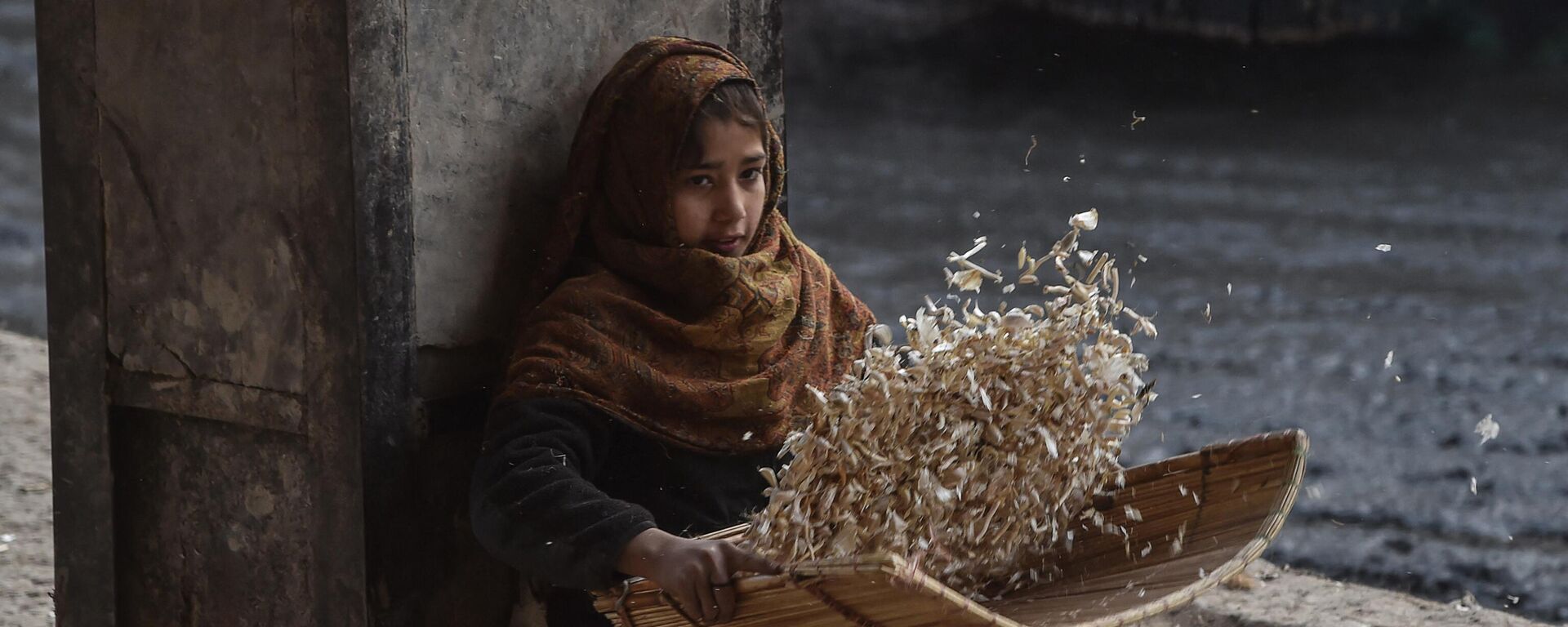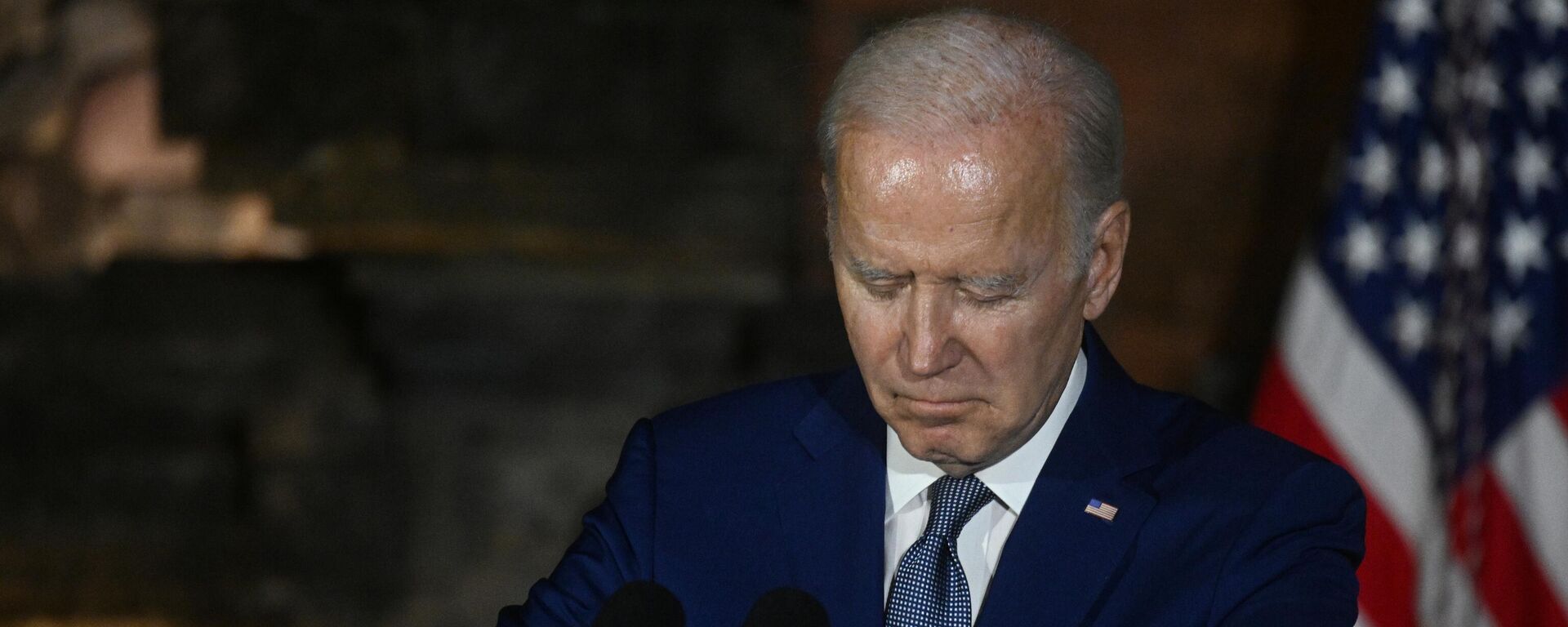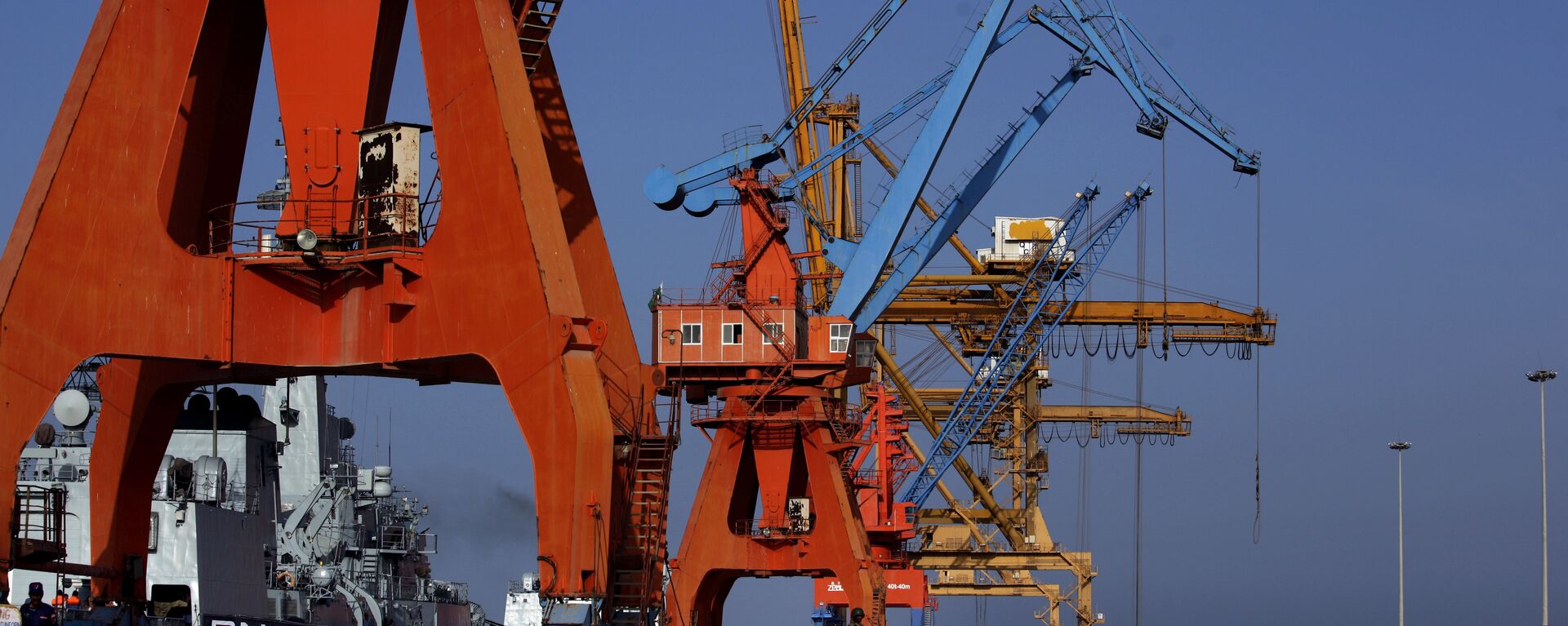https://sputniknews.in/20230330/why-is-pakistans-education-system-riddled-with-fault-lines-1372654.html
Why is Pakistan's Education System Riddled With Fault Lines?
Why is Pakistan's Education System Riddled With Fault Lines?
Sputnik India
Pakistan has great potential for talented and skilled youth that can transform its economy if the country's literacy rate is enhanced. Over the years, steps... 30.03.2023, Sputnik India
2023-03-30T20:17+0530
2023-03-30T20:17+0530
2023-03-30T23:00+0530
pakistan
school students
corruption
south asia
https://cdn1.img.sputniknews.in/img/07e7/03/1e/1373279_0:0:3073:1728_1920x0_80_0_0_e95d7ee36fb3ba797b54060ba3ee95f7.jpg
According to the Ministry of Federal Education and Professional Training, Pakistan's current literacy rate is 62.3% which means that out of an estimated 220-million population, 60 million people are illiterate.As part of its development goal, Pakistan is committed to transforming its education system. The Pakistan Economic Survey noted that the South Asian country seeks to attain a "high-quality global-market demand-driven system in accordance with Goal 4 of the Sustainable Development Goals (SDGs)."However, some researchers feel that any gains in literacy rates over the past several years have been minute and sluggish. It was reported that in 2021-22, Pakistan spent only 1.77% of its GDP on education-related expenditures at both the federal and regional levels. With that being said, most UN agencies suggest that the minimum expenditure on education should be at least 4% of GDP.Tremendous PotentialEducation can transform Pakistan because the country has one of the world's highest population growth rates outside of Africa. The country’s population is estimated to reach 403 million by 2050 (UN median range projection).Today there are more young people in Pakistan than at any point in its history, and it has one of the world’s largest youth populations, with 64% of Pakistanis now under the age of 30.If the country can manage to educate and provide skills to this massive youth population, it could have a tremendous youth dividend and skilled professionals that can aid the country's economic growth and modernization.But on the other hand, if this large population is left uneducated and unintegrated into the job market, the results can be disastrous. A large population puts immense pressure on the country's healthcare, development, sanitation and educational sectors. If millions of young adults are left jobless, crime and corruption can further lead to the destabilization of economic and political systems.Three Main School TypesAccording to the Global Youth Development Index 2020 published by the Commonwealth, an initiative which uses the domains of civic participation, education, employment and opportunity, health and well-being, and political participation to calculate the progress of young people, Pakistan ranked only 154th of 183 countries, trailing sub-Saharan African nations like Sierra Leone or Ethiopia.Furthermore, Pakistan has the highest number of out-of-school children worldwide after Nigeria, as some 22.7 million Pakistani children aged 5 to 16 do not go to school. These children mostly belong to low-income families, as their parents cannot afford to send them to schools. There is also a large divide between boys and girls who are allowed to study. In many cases, girls miss out on the learning opportunities because of safety concerns and they are needed to help with house chores.Meanwhile, children who are enrolled in schools are taught in different systems because the country does not have one uniform schooling framework. Pakistan’s schooling system consists of three main school types namely public sector schools, private sector schools and Deeni Madaris (religious schools).These systems are divided as public and private due to different curriculum and examination systems, and also due to the language of instructions used by teachers. Public schools can either use Urdu or English, yet private schools always use English.It should be noted that English is the official language of Pakistan, hence, the children who receive education in Urdu without studying English fall behind because the job market prefers those who know English.Elements Adding to Poor LiteracyThere are reportedly more than 300,000 schools and colleges across Pakistan, and there are a total of 186 universities and degree-awarding institutions in both public and private sectors of education. Despite that, the literacy rate in the country is quite low and there are a multitude of reasons for that.Although there are thousands of schools across the country, many of them are dysfunctional and dilapidated. Such schools lack sanitation and even electricity, and they have under qualified teaching staff. Most of these schools are located in smaller cities and towns, where checks and balances aren't as good as in bigger cities.There is also widespread corruption, and tens of thousands of "ghost teachers" that use public payrolls but do not show up for work.These issues are worse at the elementary level, where most of Pakistan’s students are enrolled, but they have ripple effects for the entire education system.Looking deeper at some of the issues that permeate not just the elementary but also the secondary level, it becomes clear that a lack of uniformity in the three systems (public, private and religious) results in chaos and polarization because students learn from different curricula.Another factor contributing to low literacy rate is a lack of practical research and development, scientific knowledge and reflective observation in Pakistan's educational systems. Students are generally following the old-fashioned and outdated curriculums of rote memorization, cramming the facts and figures in order to get good grades in school and college examinations which primarily test pupil's memory skills rather than analytical or logical problem-solving.One fact that testifies to this argument is that Pakistan has almost no PhD holders, because it lacks PhD qualified teachers. Pakistanis who can afford to study abroad go to the UK, the US or Europe to receive a PhD qualification.Most of these issues arise due to the lack of funding, as public universities receive only about 40% of their current budget, 34% from federal and 6-8% from provincial governments. The rest of the 60% of the expenses are created by generating revenues through student fees.That in turn means a higher burden on middle class families and shoving the poor out of the system altogether because they cannot afford to pay the fees. According to a UNESCO source, only 1.5% of the poor can complete their tertiary education.Predicament With Lack of FundingA complete and wholesome educational system cannot be achieved without sufficient funding. In Pakistan, a serious lack of funding results in a myriad of issues such as education without direction, lack of professional development of teachers, under-qualified teachers, a lack of resources such as spacious classrooms, good libraries and modern laboratories.Poor funding also results in low supervision standards, a lack of policy implementation and so on. Prevalence of corruption is another factor responsible for the deterioration of the education system because it results in the use of unfair means, nepotism, favors in transfer and promotion and appointments.Furthermore, it leads to poor decision-making, misuse of funds, use of illegal authority by the school management, and gender-based exploitation and harassment.Although Pakistan has evolved since the 20th century and important steps have been taken in improving literacy and participation rates, the education system remains largely elitist, with access to the best educational opportunities available only to the rich or well-connected.Nevertheless, with proper budget allocation and clamping down on corruption, the country should try to reduce the fragmentation and inequalities of Pakistan’s school system and create a modernized uniform education system for all.The previous government of former PM Imran Khan had taken a step in that direction with the creation of the National Curriculum Committee (NCC) which was tasked with coordinating standards between provinces and developing a Single National Curriculum (SNC) for school education.Similar steps may bring better top-down governance structures, improve conditions of the faculty and enhance cooperation between institutions, bringing in better accountability to help curb corruption.
https://sputniknews.in/20230323/why-pakistan-day-is-a-unifying-force-for-every-pakistani-1276582.html
https://sputniknews.in/20230124/exploitation-of-innocence-growing-child-labor-in-pakistan-raises-alarm-621297.html
https://sputniknews.in/20230320/how-middle-easts-education-sector-is-undergoing-a-rapid-digital-revolution-1219981.html
https://sputniknews.in/20230328/pakistan-rejects-invitation-to-us-backed-summit-for-democracy-for-2nd-time-1342418.html
https://sputniknews.in/20230322/power-project-with-iran-aims-to-keep-gwadar-port-functioning-amid-economic-crisis-in-pakistan-1260131.html
pakistan
south asia
Sputnik India
feedback.hindi@sputniknews.com
+74956456601
MIA „Rossiya Segodnya“
2023
Aneela Rashid
https://cdn1.img.sputniknews.in/img/07e6/0c/0d/74548_0:0:485:484_100x100_80_0_0_821526e967ae85d041e2d30ee34fa1de.jpg
Aneela Rashid
https://cdn1.img.sputniknews.in/img/07e6/0c/0d/74548_0:0:485:484_100x100_80_0_0_821526e967ae85d041e2d30ee34fa1de.jpg
News
en_IN
Sputnik India
feedback.hindi@sputniknews.com
+74956456601
MIA „Rossiya Segodnya“
Sputnik India
feedback.hindi@sputniknews.com
+74956456601
MIA „Rossiya Segodnya“
Aneela Rashid
https://cdn1.img.sputniknews.in/img/07e6/0c/0d/74548_0:0:485:484_100x100_80_0_0_821526e967ae85d041e2d30ee34fa1de.jpg
pakistan, school students, corruption, south asia
pakistan, school students, corruption, south asia
Why is Pakistan's Education System Riddled With Fault Lines?
20:17 30.03.2023 (Updated: 23:00 30.03.2023) Pakistan has great potential for talented and skilled youth that can transform its economy if the country's literacy rate is enhanced. Over the years, steps have been taken in the right direction, but polarized educational systems and corruption continue to perpetuate the gap between educated and uneducated populations.
According to the Ministry of Federal Education and Professional Training, Pakistan's current
literacy rate is 62.3% which means that out of an estimated 220-million population, 60 million people are illiterate.
As part of its development goal, Pakistan is committed to transforming its education system. The Pakistan Economic Survey noted that the South Asian country seeks to attain a "high-quality global-market demand-driven system in accordance with Goal 4 of the Sustainable Development Goals (SDGs)."
However, some
researchers feel that any gains in literacy rates over the past several years have been minute and sluggish. It was reported that in 2021-22, Pakistan spent only 1.77% of its GDP on education-related expenditures at both the federal and regional levels. With that being said, most UN agencies suggest that the minimum expenditure on education should be at least 4% of GDP.
Education can transform Pakistan because the country has one of the world's highest population growth rates outside of Africa. The country’s population is estimated to reach 403 million by 2050 (UN median range projection).
Today there are more young people in Pakistan than at any point in its history, and it has one of the world’s largest youth populations, with 64% of Pakistanis now under the age of 30.
If the country can manage to educate and provide skills to this massive youth population, it could have a tremendous youth dividend and skilled professionals that can aid the country's economic growth and modernization.
But on the other hand, if this large population is left uneducated and unintegrated into the job market, the results can be disastrous. A large population puts immense pressure on the country's healthcare, development, sanitation and educational sectors. If millions of young adults are left jobless, crime and corruption can further lead to the destabilization of economic and political systems.
According to the Global Youth Development Index 2020 published by the Commonwealth, an initiative which uses the domains of civic participation, education, employment and opportunity, health and well-being, and political participation to calculate the progress of young people, Pakistan ranked only 154th of 183 countries, trailing sub-Saharan African nations like Sierra Leone or Ethiopia.
Furthermore, Pakistan has the highest number of out-of-school children worldwide after Nigeria, as some 22.7 million Pakistani children aged 5 to 16 do not go to school. These children mostly belong to low-income families, as their parents cannot afford to send them to schools. There is also a large divide between boys and girls who are allowed to study. In many cases, girls miss out on the learning opportunities because of safety concerns and they are needed to help with house chores.
Meanwhile, children who are enrolled in schools are taught in different systems because the country does not have one uniform schooling framework. Pakistan’s schooling system consists of three main school types namely public sector schools, private sector schools and Deeni Madaris (religious schools).
These systems are divided as public and private due to different curriculum and examination systems, and also due to the language of instructions used by teachers. Public schools can either use Urdu or English, yet private schools always use English.
It should be noted that English is the official language of Pakistan, hence, the children who receive education in Urdu without studying English fall behind because the job market prefers those who know English.
Elements Adding to Poor Literacy
There are reportedly more than 300,000 schools and colleges across Pakistan, and there are a total of 186 universities and degree-awarding institutions in both public and private sectors of education. Despite that, the literacy rate in the country is quite low and there are a multitude of reasons for that.
Although there are thousands of schools across the country, many of them are dysfunctional and dilapidated. Such schools lack sanitation and even electricity, and they have under qualified teaching staff. Most of these schools are located in smaller cities and towns, where checks and balances aren't as good as in bigger cities.
There is also widespread corruption, and tens of thousands of "ghost teachers" that use public payrolls but do not show up for work.
These issues are worse at the elementary level, where most of Pakistan’s students are enrolled, but they have ripple effects for the entire education system.
Looking deeper at some of the issues that permeate not just the elementary but also the secondary level, it becomes clear that a lack of uniformity in the three systems (public, private and religious) results in chaos and polarization because students learn from different curricula.
According to researcher Sabiha Abid, "Polarized education system has further divided society on political, economic and social grounds instead of uniting people. This division is leading towards further segregation on linguistic and religious levels and cutting knee-deep into the ideological foundation of the nation."
Another factor contributing to low literacy rate is a lack of practical research and development, scientific knowledge and reflective observation in Pakistan's educational systems. Students are generally following the old-fashioned and outdated curriculums of rote memorization, cramming the facts and figures in order to get good grades in school and college examinations which primarily test pupil's memory skills rather than analytical or logical problem-solving.
One fact that testifies to this argument is that Pakistan has almost no PhD holders, because it lacks PhD qualified teachers. Pakistanis who can afford to study abroad go to the UK, the US or Europe to receive a PhD qualification.
Most of these issues arise due to the lack of funding, as public universities receive only about 40% of their current budget, 34% from federal and 6-8% from provincial governments. The rest of the 60% of the expenses are created by generating revenues through student fees.
That in turn means a higher burden on middle class families and shoving the poor out of the system altogether because they cannot afford to pay the fees. According to a UNESCO source, only 1.5% of the poor can complete their tertiary education.
Predicament With Lack of Funding
A complete and wholesome educational system cannot be achieved without sufficient funding. In Pakistan, a serious lack of funding results in a myriad of issues such as education without direction, lack of professional development of teachers, under-qualified teachers, a lack of resources such as spacious classrooms, good libraries and modern laboratories.
Poor funding also results in low supervision standards, a lack of policy implementation and so on. Prevalence of corruption is another factor responsible for the deterioration of the education system because it results in the use of unfair means, nepotism, favors in transfer and promotion and appointments.
Furthermore, it leads to poor decision-making, misuse of funds, use of illegal authority by the school management, and gender-based exploitation and harassment.
Although Pakistan has evolved since the 20th century and important steps have been taken in improving literacy and participation rates, the education system remains largely elitist, with access to the best educational opportunities available only to the rich or well-connected.
Nevertheless, with proper budget allocation and clamping down on corruption, the country should try to reduce the fragmentation and inequalities of Pakistan’s school system and create a modernized uniform education system for all.
The previous government of former PM Imran Khan had taken a step in that direction with the creation of the National Curriculum Committee (NCC) which was tasked with coordinating standards between provinces and developing a Single National Curriculum (SNC) for school education.
Similar steps may bring better top-down governance structures, improve conditions of the faculty and enhance cooperation between institutions, bringing in better accountability to help curb corruption.







